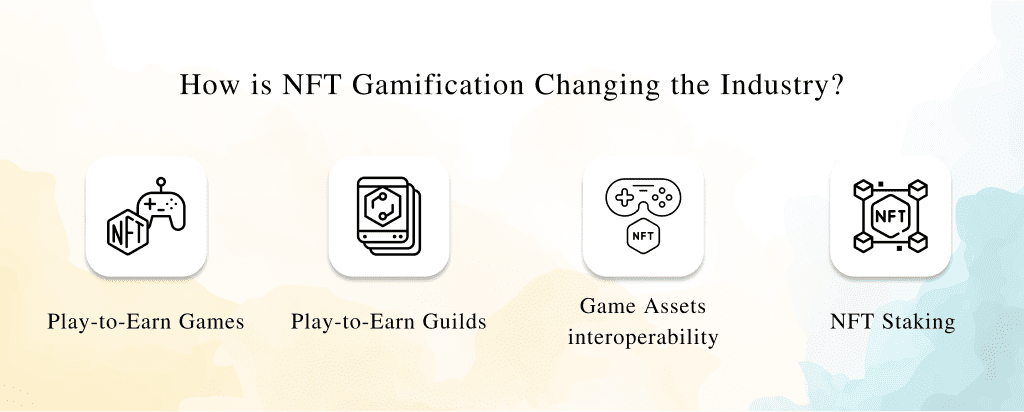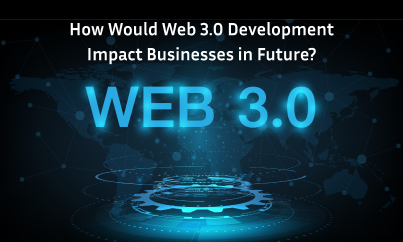Explanation of NFT Gamification:
NFT Gamification is a specific collection of components that may be traded to play and earn additional income. NFTs change the gaming industry in many ways, like collecting an nft art, buying and selling digital artwork, creating nft etc. Blockchain technology and traditional game components like point tally, rivalry, and game rules are combined in NFT gamification.
The game’s currency is NFTs, and players and collectors value them highly. Additionally, they can be traded for actual money. These gaming industry resources are expertly programmed as NFTs, which have a ready market for various players and can be made available for purchase.
How is NFT Gamification Changing the Industry?
Together, NFTs and blockchain solutions are transforming the gaming industry. Disruption is developing in a few ways:

-
- Play-to-Earn Games:
There has always been a play-to-win possibility in the traditional gaming industry. Players buy in-game items to improve gameplay in this gaming structure. Both trading and monetization were not possible with these in-game items.
Those who want to make money while playing games can use the new play-to-earn business model as a source of income. Trading NFTs in NFT Games or receiving in-game rewards are the two main ways to earn in-game rewards. Also, In-game NFT marketplaces can be selected by game owners at the beginning of game production or added afterwards by a company that develops NFT gaming platforms.
-
- Play-to-Earn Guilds:
With the popularity of play-to-earn games, so did the startup costs. The play-to-earn guilds allow members to rent game items rather than acquire them. In-game asset lenders make money by taking a cut of the players’ earnings, even though this lowers the cost for players. Additionally, some guilds arrange instructional programs to teach new players how to play games strategically to increase their income.
-
- Game Assets interoperability:
The reality that players could not transfer in-game assets they earned in one game to another is one of the main reasons why NFT gamification has become so popular. Blockchain games will likely change this since blockchains and the games developed on them rapidly progress towards interoperability.
The interoperability of blockchain-based NFT Games, on the other hand, enables players to use their unique gaming industry assets across various games.

-
- NFT Staking:
You must be aware of crypto token staking, and maybe you’ve even tried it to generate passive revenue from tokens you intend to keep for a very long time. Companies that develop NFT gaming platforms have cloned the same idea. But with these platforms, users can store their NFTs in smart contracts rather than coins.
Different NFT staking models are emerging quickly. A participant may, for example, invest his cryptocurrency in a pool and receive an NFT as payment. He can trade this NFT in the open market or use it to access a larger staking reward pool. Staking the NFT in a DAO, or decentralized autonomous organization, is an additional choice.
Conclusion:
Game dynamics may be improved in unexpected ways by gamification for NFT development. Due to its proof and scarcity, it’s a strong competitor for in-game goods and enhancing in-game economic systems.
NFT gamification requires correct blockchain development and goes beyond game development. As a leader in developing NFT gaming platforms, Rain Infotech Private Limited has established its experience in blockchain game development, NFT development, and gaming tokenomics. Planning to get started in NFT Gaming industry? Get in touch with us!!






